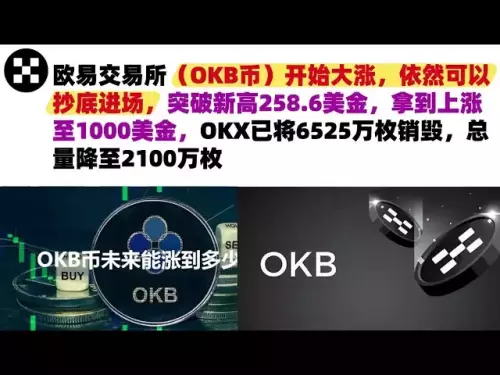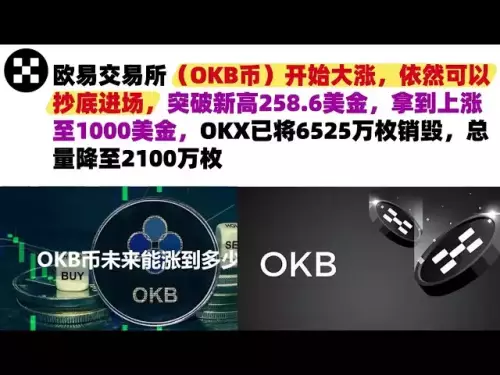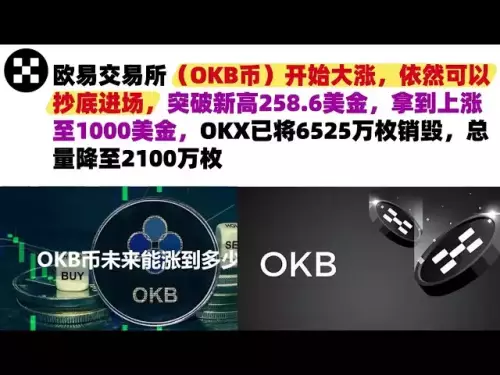-
 Bitcoin
Bitcoin $108600
-1.27% -
 Ethereum
Ethereum $4389
1.04% -
 Tether USDt
Tether USDt $1.000
0.00% -
 XRP
XRP $2.810
-2.20% -
 BNB
BNB $860.0
0.66% -
 Solana
Solana $202.7
-2.22% -
 USDC
USDC $0.9998
0.00% -
 Dogecoin
Dogecoin $0.2157
0.50% -
 TRON
TRON $0.3404
0.44% -
 Cardano
Cardano $0.8272
0.53% -
 Chainlink
Chainlink $23.37
-0.08% -
 Hyperliquid
Hyperliquid $43.59
-1.49% -
 Ethena USDe
Ethena USDe $1.001
0.01% -
 Sui
Sui $3.323
0.68% -
 Stellar
Stellar $0.3577
-1.52% -
 Bitcoin Cash
Bitcoin Cash $535.0
0.12% -
 Cronos
Cronos $0.3095
1.01% -
 Avalanche
Avalanche $23.73
0.07% -
 Hedera
Hedera $0.2260
-1.05% -
 UNUS SED LEO
UNUS SED LEO $9.504
-1.00% -
 Litecoin
Litecoin $110.5
0.54% -
 Toncoin
Toncoin $3.083
0.60% -
 Shiba Inu
Shiba Inu $0.00001240
1.66% -
 Uniswap
Uniswap $9.765
1.98% -
 Polkadot
Polkadot $3.796
-0.62% -
 Dai
Dai $0.9999
-0.01% -
 Bitget Token
Bitget Token $4.539
-0.62% -
 Monero
Monero $267.7
1.55% -
 Aave
Aave $317.5
2.35% -
 Ethena
Ethena $0.6705
3.94%
How to interpret the intraday chart breaking below the moving average? Is it going to weaken?
When an intraday chart breaks below a moving average, it may signal a weakening trend, but traders should consider volume, other indicators, and market sentiment for confirmation.
Jun 03, 2025 at 11:00 pm
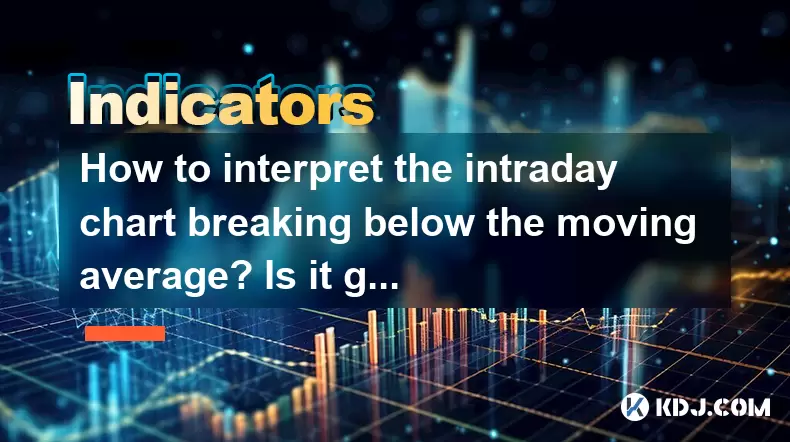
Understanding the dynamics of intraday charts and moving averages is crucial for traders within the cryptocurrency market. When an intraday chart breaks below a moving average, it can signal various potential market conditions. This article delves into the implications of such an event and whether it indicates a weakening trend.
What is an Intraday Chart?
An intraday chart is a graphical representation of price movements within a single trading day. These charts are essential for traders who engage in short-term trading strategies, such as day trading or scalping. Intraday charts provide detailed insights into the price action of a cryptocurrency, allowing traders to make informed decisions based on the current market conditions.
What is a Moving Average?
A moving average is a technical analysis tool that smooths out price data by creating a constantly updated average price. In the context of cryptocurrency trading, moving averages are used to identify trends and potential reversals. There are several types of moving averages, such as the simple moving average (SMA) and the exponential moving average (EMA), each with its own calculation method and application.
Interpreting the Intraday Chart Breaking Below the Moving Average
When an intraday chart breaks below a moving average, it can be interpreted as a potential bearish signal. This event suggests that the short-term price momentum is shifting downwards, which could indicate a weakening of the current trend. However, the interpretation of this signal can vary depending on several factors, including the type of moving average used and the timeframe of the chart.
Factors to Consider When Analyzing the Break Below the Moving Average
Several factors need to be considered when analyzing an intraday chart breaking below a moving average:
Type of Moving Average: The type of moving average used can affect the interpretation of the break. For instance, a break below a short-term moving average like the 50-day EMA might indicate a more immediate bearish shift compared to a break below a longer-term moving average like the 200-day SMA.
Timeframe of the Chart: The timeframe of the intraday chart can influence the significance of the break. A break on a 1-minute chart might have less impact than a break on a 15-minute or 1-hour chart.
Volume and Price Action: The volume and price action accompanying the break can provide additional context. A break accompanied by high volume and significant price movement might be more indicative of a trend change than a break with low volume and minimal price action.
Other Technical Indicators: It's essential to consider other technical indicators, such as the Relative Strength Index (RSI) or the Moving Average Convergence Divergence (MACD), to confirm the bearish signal.
Is the Trend Going to Weaken?
Whether the trend is going to weaken following an intraday chart breaking below the moving average depends on the broader market context and the factors mentioned above. Here are some scenarios to consider:
Confirmation from Other Indicators: If other technical indicators confirm the bearish signal, the likelihood of a weakening trend increases. For instance, if the RSI is also showing overbought conditions and the MACD is indicating a bearish crossover, the break below the moving average is more significant.
Market Sentiment: The overall market sentiment can influence the impact of the break. If the broader market is experiencing bearish sentiment, a break below the moving average on an intraday chart could be part of a larger bearish move.
Price Levels and Support Zones: The proximity of the break to key support levels or zones can affect the outcome. If the break occurs near a strong support level, the trend might not weaken significantly. However, if the break pushes the price below a critical support zone, it could signal a more substantial weakening of the trend.
Practical Steps to Analyze the Break Below the Moving Average
To effectively analyze an intraday chart breaking below a moving average, traders can follow these practical steps:
Identify the Moving Average: Determine which moving average is being used and its timeframe. For example, is it a 50-day EMA or a 200-day SMA?
Analyze the Break: Look at the price action and volume when the break occurs. Was the break accompanied by a significant increase in volume? Did the price move aggressively below the moving average?
Check Other Indicators: Use other technical indicators to confirm the bearish signal. For instance, check the RSI for overbought conditions or the MACD for a bearish crossover.
Assess Market Sentiment: Evaluate the broader market sentiment to understand the context of the break. Are other cryptocurrencies also experiencing bearish pressure?
Identify Key Levels: Determine the proximity of the break to key support levels or zones. Is the break occurring near a critical support level that could halt the downward movement?
Monitor Subsequent Price Action: Continue to monitor the price action following the break. Does the price continue to move lower, or does it bounce back above the moving average?
Frequently Asked Questions
Q: Can a break below the moving average on an intraday chart be a false signal?A: Yes, a break below the moving average on an intraday chart can sometimes be a false signal. This can occur if the break is not accompanied by significant volume or if other technical indicators do not confirm the bearish signal. It's essential to consider the broader market context and use multiple indicators to validate the signal.
Q: How can I differentiate between a short-term correction and a trend reversal following a break below the moving average?A: Differentiating between a short-term correction and a trend reversal requires analyzing the duration and magnitude of the price movement following the break. A short-term correction might see the price quickly bounce back above the moving average, while a trend reversal could result in sustained downward movement. Additionally, consider the strength of other technical indicators and the overall market sentiment to determine the likelihood of a trend reversal.
Q: Are there specific moving averages that are more reliable for intraday trading?A: The reliability of moving averages for intraday trading can vary depending on the cryptocurrency and the trading strategy. Commonly used moving averages for intraday trading include the 9-day and 21-day EMAs, which are sensitive to short-term price movements. However, the effectiveness of these moving averages can differ based on market conditions and the specific asset being traded.
Q: How can I use multiple moving averages to confirm a break below a single moving average?A: Using multiple moving averages can provide a more comprehensive view of the market trend. For instance, if an intraday chart breaks below a short-term moving average like the 9-day EMA and subsequently breaks below a longer-term moving average like the 21-day EMA, it can confirm a bearish signal. Traders can also use the crossover of two moving averages, such as the 9-day EMA crossing below the 21-day EMA, to validate the break and potential trend weakening.
Disclaimer:info@kdj.com
The information provided is not trading advice. kdj.com does not assume any responsibility for any investments made based on the information provided in this article. Cryptocurrencies are highly volatile and it is highly recommended that you invest with caution after thorough research!
If you believe that the content used on this website infringes your copyright, please contact us immediately (info@kdj.com) and we will delete it promptly.
- AAVE Price Prediction: Will It Breakout to $400 by September 2025?
- 2025-08-30 19:25:13
- Bitcoin, Ethereum, XRP Price Check: What's the Deal?
- 2025-08-30 19:05:16
- AI Coins in 2025: Riding the $LYNO Wave in the Cryptocurrency World
- 2025-08-30 19:45:13
- BlockchainFX, MAGACOIN FINANCE, Crypto Presale: The 2025 Hot List
- 2025-08-30 19:50:12
- DeFi's Golden Age: How Polygon's USDT/XAU Integration Ushers in a New Era
- 2025-08-30 17:05:12
- Plasma, EtherFi, and Stablecoin Yields: A New Era of DeFi?
- 2025-08-30 16:45:21
Related knowledge
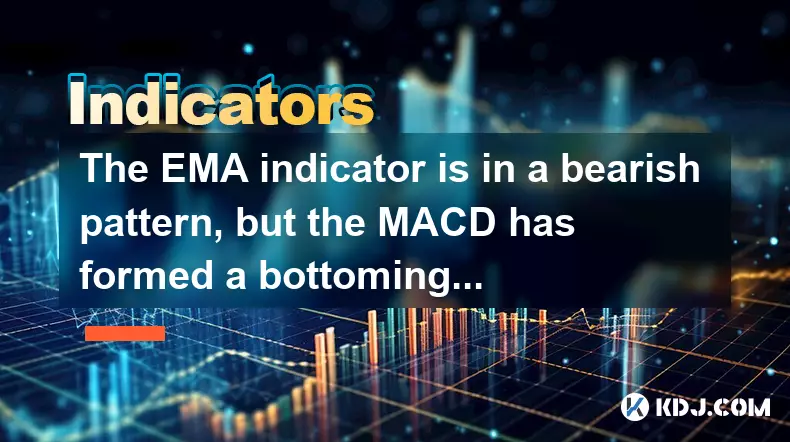
The EMA indicator is in a bearish pattern, but the MACD has formed a bottoming divergence. How should I choose?
Aug 30,2025 at 02:19pm
Bearish EMA vs. Bullish MACD Divergence: Understanding the Conflict1. The Exponential Moving Average (EMA) is a trend-following indicator that gives m...
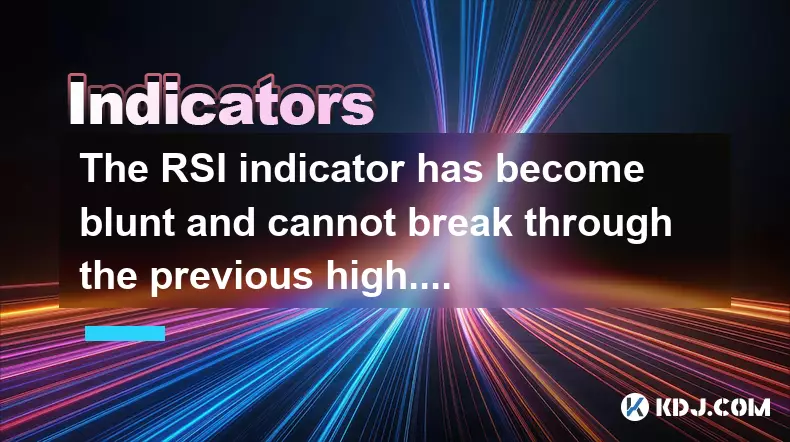
The RSI indicator has become blunt and cannot break through the previous high. Is this a signal that the rally is over?
Aug 30,2025 at 08:01pm
Understanding RSI Behavior in Extended Bull Runs1. The Relative Strength Index (RSI) is a momentum oscillator that measures the speed and change of pr...

The MACD histogram has turned from green to red, but the fast and slow lines are still below the water level. How can I interpret this?
Aug 30,2025 at 07:13am
Understanding the MACD Histogram Shift1. The MACD histogram turning from green to red indicates a weakening of downward momentum in the price trend. T...
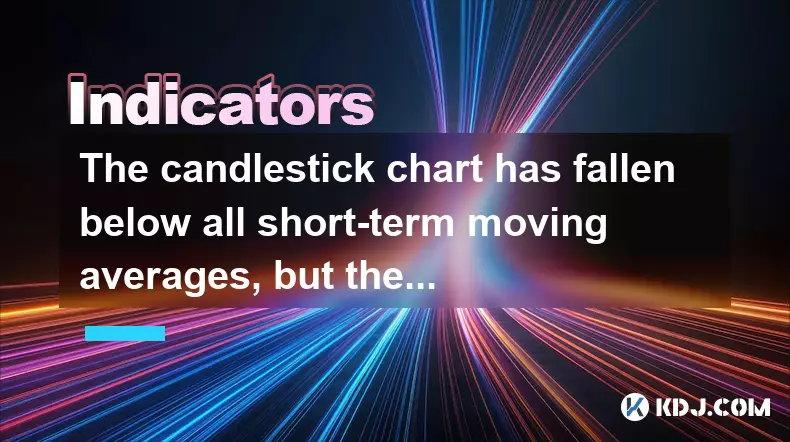
The candlestick chart has fallen below all short-term moving averages, but the long-term moving average remains upward. What's the market outlook?
Aug 30,2025 at 06:19pm
Understanding the Current Market Structure1. The price action has recently dropped beneath key short-term moving averages such as the 9-day, 20-day, a...
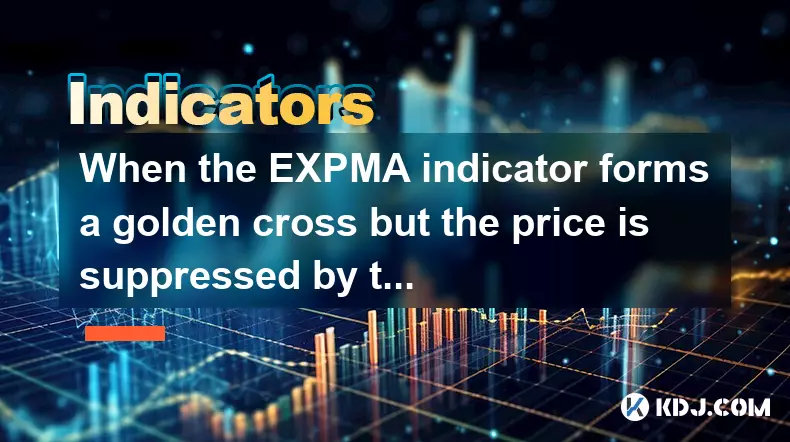
When the EXPMA indicator forms a golden cross but the price is suppressed by the upper moving average, how should I interpret it?
Aug 30,2025 at 07:18pm
Understanding the EXPMA Golden Cross in Constrained Price Action1. The EXPMA (Exponential Moving Average) golden cross occurs when a shorter-term EXPM...
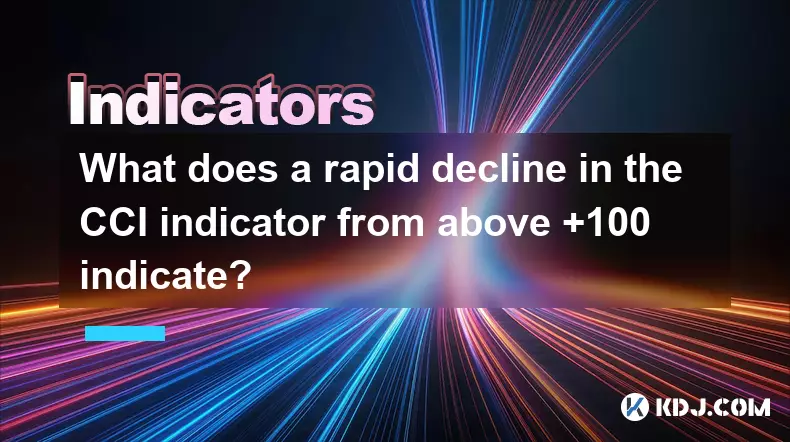
What does a rapid decline in the CCI indicator from above +100 indicate?
Aug 30,2025 at 05:17am
Rapid Decline in CCI from Above +100: Key Implications1. The Commodity Channel Index (CCI) is a momentum-based oscillator widely used in cryptocurrenc...

The EMA indicator is in a bearish pattern, but the MACD has formed a bottoming divergence. How should I choose?
Aug 30,2025 at 02:19pm
Bearish EMA vs. Bullish MACD Divergence: Understanding the Conflict1. The Exponential Moving Average (EMA) is a trend-following indicator that gives m...

The RSI indicator has become blunt and cannot break through the previous high. Is this a signal that the rally is over?
Aug 30,2025 at 08:01pm
Understanding RSI Behavior in Extended Bull Runs1. The Relative Strength Index (RSI) is a momentum oscillator that measures the speed and change of pr...

The MACD histogram has turned from green to red, but the fast and slow lines are still below the water level. How can I interpret this?
Aug 30,2025 at 07:13am
Understanding the MACD Histogram Shift1. The MACD histogram turning from green to red indicates a weakening of downward momentum in the price trend. T...

The candlestick chart has fallen below all short-term moving averages, but the long-term moving average remains upward. What's the market outlook?
Aug 30,2025 at 06:19pm
Understanding the Current Market Structure1. The price action has recently dropped beneath key short-term moving averages such as the 9-day, 20-day, a...

When the EXPMA indicator forms a golden cross but the price is suppressed by the upper moving average, how should I interpret it?
Aug 30,2025 at 07:18pm
Understanding the EXPMA Golden Cross in Constrained Price Action1. The EXPMA (Exponential Moving Average) golden cross occurs when a shorter-term EXPM...

What does a rapid decline in the CCI indicator from above +100 indicate?
Aug 30,2025 at 05:17am
Rapid Decline in CCI from Above +100: Key Implications1. The Commodity Channel Index (CCI) is a momentum-based oscillator widely used in cryptocurrenc...
See all articles























